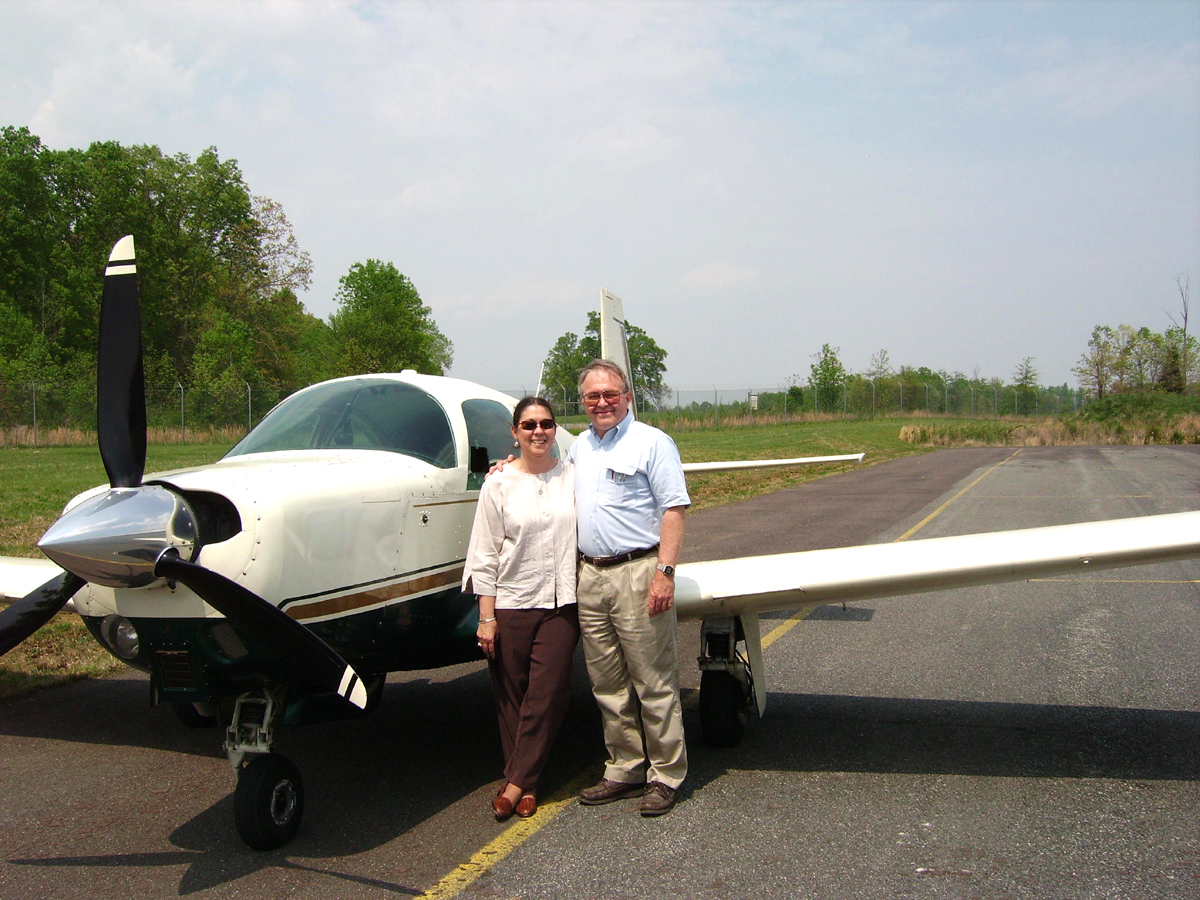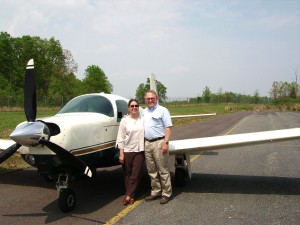By Henry M. Holden
The Experimental Aircraft Association has selected Richard Koehler, of Burke, Va., as the 2007 recipient of the EAA’s Tony Bingelis Award. The EAA will honor Koehler at the Homebuilder’s Dinner on July 26, during the annual AirVenture convention in Oshkosh, Wis. The award recognizes Koehler’s involvement as an active aviation technical writer, volunteer technical counselor and aircraft builder.
The Tony Bingelis Award, created in 2002, recognizes those who significantly encourage aircraft projects and air safety and who maintain the values of EAA. Bingelis wrote more than 300 how-to articles and four homebuilt aircraft books before his death in 2001.
This is not the first award Koehler has received for his volunteer work. He was the 2005 recipient of Flying Magazine’s Bax Seat Trophy for his technical writing.
Navy career
Koehler’s introduction to aviation came by way of a full Navy ROTC scholarship to Purdue University, where he earned an undergraduate degree in aeronautical engineering.
“I turned down an appointment to the Naval Academy, because I wanted an engineering degree,” Koehler said.
Following his commission as an ensign in the Navy, he went to flight training at Pensacola, Fla. There he qualified for jets, flying the prop-driven T-34 Mentor, basic jet T-2 Buckeye and Korean War vintage advanced jet TF-9J Cougar.
“From there, I got two all-expense-paid vacations to Vietnam, flying the A-6 Intruder off the USS Enterprise,” Koehler said.
Koehler went on to fly 157 combat missions and earned the Distinguished Flying Cross and several air medals.
“After my tours in Vietnam, the Navy sent me to the Naval Postgraduate School in Monterey, Calif., where I earned a dual master’s degree in avionics and aeronautical engineering,” Koehler said. “After that, I got my designator changed from being a pilot, although I still flew regularly, to what’s called an ‘aeronautical engineering duty officer.’ I was the youngest and one of only 350 in the Navy. I worked a lot of technical liaison between the Navy and the private industry.”
From there Koehler went to San Diego, where he flew the airborne early warning turboprop E-2 Hawkeye, and then went to the Philippines to run a maintenance depot level facility.
“My flying duties ranged from repairing aircraft from Japan to Africa,” he said.
Koehler also logged 1,000 hours in the C-117 Super DC-3.
“It was probably the most fun flying I ever had,” he recalled.
From there, he went to the Naval Air Development Center in Warminster, Pa., near Philadelphia, where he did research and development work.

Students have to troubleshoot the electrical system circuits for a fault installed by Richard Koehler.
“I flew the first ‘ring laser gyro inertial navigation system’ on a tactical aircraft in the A-7E Corsair II, the first tactical voice recognition software in an aircraft, and the first holographic heads-up-display,” Koehler said.
He got interested in aircraft homebuilding and restoration during that period.
“I built a KR-2 in 1981 and flew it for a few years,” he said.
After his transfer to Washington, D.C., as a deputy program manager in the Naval Air Systems Command, he bought a Swift.
“That was in 1983,” he said. “It was a basket case, and at the time, and in my naiveté, I didn’t realize how bad it was.”
Koehler transferred to Australia and left the Swift with his father. When he returned, he discovered that the airplane had appreciated in value. Unhappy with the Swift’s handling, he sold it and bought a 1963 Mooney M20C for $14,000. It had a high-time engine, needed a paint job and had old Mark 12 avionics.
“Over the years, I’ve rebuilt it to the point where now it’s kind of a show plane,” Koehler said proudly. “I now have more than 2,500 hours of flight time in it. We use it for any trip more than 100 miles. A few years ago, I bought a wrecked M20E, rebuilt it and sold it.”
Shortly after buying the M20C, Koehler had a total electrical failure in it, on an IFR at night. The local Federal Aviation Administration inspector recommended Koehler become an A&P mechanic, which he did.
In 1986, Koehler served as a staff writer for the chief of naval operations in the Pentagon. He began writing newsletter articles for EAA Chapter 186 in Manassas, Va. With a few exceptions, Koehler has written one article a month ever since.
Koehler moved back to the Naval Air Systems Command, as a major program manager, and was in charge of all common avionics developed for multiple aircraft or multi-service use. He was responsible for 28 projects, including new radio systems, air data and system computers, inertial navigation systems and the then-new Global Positioning System. He managed a development and production budget of more than $20 million per year.
In recognition of this work, he gained an early promotion to Captain and took over an even bigger program: the T-45 Jet Training System, which had recently failed its first operational inspection and was at risk of being cancelled. In four years, Koehler was able to turn the program around completely. He fixed the deficiencies, and the system of jet trainers, simulators and contract maintenance successfully went into production. The program cost was slightly over $3 billion.
After retirement
Koehler retired from the Navy in 1993 and began an active career in the aerospace industry. He set up an engineering support department for Atlantic Coast Airlines and worked with such companies as Grumman Aerospace and Rolls Royce as the vice president of small engines. He joined the University of the District of Columbia in January 1998 as a tenured associate professor.
Today, Koehler teaches in the aviation technology program; over the years, he’s taught every aviation maintenance course UDC offers. He’s an active A&P mechanic with inspection authorization certification.
After World War II, Koehler’s father went to Purdue under the GI Bill and completed a program called “Air Transportation.” He became an airport operations manager and earned his aircraft & engine (today’s A&P) certificate and CFI.
“It’s ironic,” said Koehler. “I teach that same aerospace technology program at UDC that he took at Purdue in 1946. He did all the sign offs on my restoration projects.”
Koehler currently specializes in the maintenance fundamentals course, which is a class for new students. He also teaches an aircraft engine systems and components class, which is the final class in the program. He enjoys seeing the students’ growth.
In his spare time, Koehler supports EAA, teaching weekend workshops on aircraft construction and serving as a technical counselor and flight advisor. He’s a prolific writer, contributing monthly technical articles for local and national use.

Richard Koehler’s students are preparing paperwork for an inspection. The student at far right, believed to be the first deaf student to become an A&P, now works for a major airline.
When he first wrote for his EAA chapter, he was supposed to write only half-page technical articles.
“There’s nothing more difficult than trying to write something technical in a half page,” he laughed. “A few years later, the EAA wanted to use some of my articles for their national magazine. I thought they wanted the articles to pass on to other chapters, so I collected a group of them, sent them in and said, ‘You can pass them on however you want.'”
Instead of passing them on, they started to publish them in Sport Aviation.
“I’ve now had 20 to 25 articles published in the magazine,” he said.
Around 1989, EAA headquarters received one of his articles. Ben Owen, head of the technical counselors at the time, thought the facts were incorrect.
“I told him I took the info out of an FAA newsletter, and that I was quoting the experts,” Koehler remembers. “We got to talking and decided that the FAA was wrong. Bill suggested that I become a technical counselor, so that’s what I did.”
For more than 17 years as a technical counselor, Koehler has shared his knowledge of aircraft and provided thousands of hours of advice to builders.
“These days, I probably do a technical counselor call at least once a week,” he said.
Koehler also does work as a flight advisor and does three or four first flight assists a year.
“We have a big chapter here, with more than 300 members, so I get a lot of phone calls for advice and help,” he said. “There’s a lot of activity in this chapter, but I’ll help anyone interested in aviation.”
He also pre-inspects homebuilt aircraft for the local FAA inspectors, saving time and money for everyone involved.
“This way, everybody wins,” he said.
Koehler says that between his teaching position and his EAA work, he feels he’s being paid to play.
“I like to keep it light and fun; it’s nice to be able to pass on knowledge to the new kids on the block,” he said. “I’ve always believed that aviation education is essential, not only for safety, but also to avoid the EAA becoming an ‘old-boys club.'”
Koehler and his wife Jane both plan to retire next year.
“We still don’t know where we’ll go, but we hope it’ll be to an airport community, where I can remain active with my hobby, the EAA and writing,” he said.
Koehler will be at AirVenture this summer, giving free presentation forums to educate and guide aircraft builders in sheet metal and composites. He also teaches an electrical and avionics systems class as a volunteer EAA SportAir workshop instructor.












